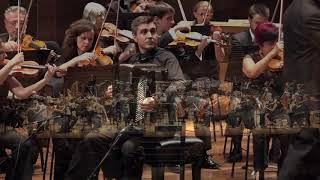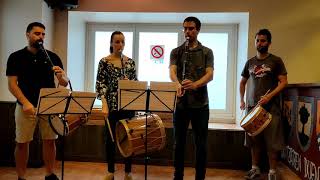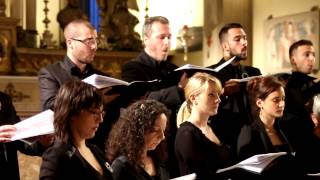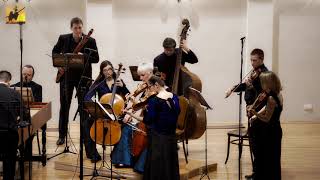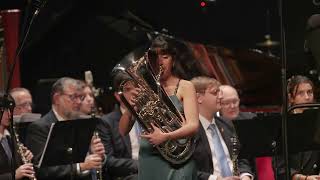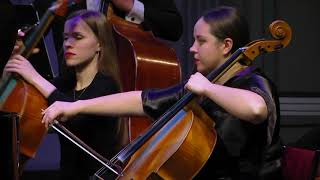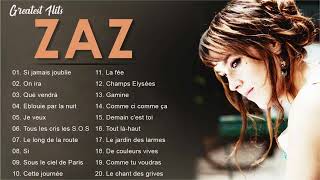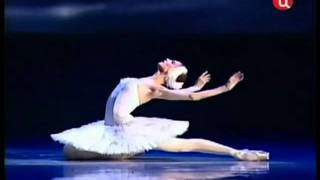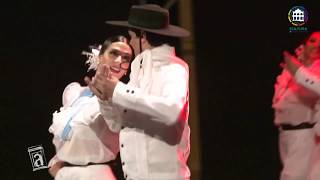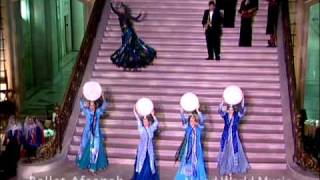Recommended music videos for initiation to classical music
Giuseppe Tartini (1692-1770) was an Italian virtuoso violinist and composer who was born in Piran , then the Republic of Venice , and today Slovenia . He had a turbulent youth because after marrying his beloved Elisabetta Premazore he was accused of having kidnapped her, so she was interned in a convent while he fled; after wandering from one place to another, he found refuge in the Convent of San Francisco , in Assisi , where he deepened his studies and violin technique; after a few years he managed to reunite with Elisabetta and work as a violinist in the theater of Ancona . In 1726 he moved permanently to Padua where he was hired by the Basilica of San Antonio and two years later he created the Scuola delle Nazioni de violin which was attended by instrumentalists from all over Europe .
Catalogue of Tartini's works . His works are classified by their Opus number (from the Latin opus 'work'), a term used in music to catalogue the works of most composers. From the 17th century , this form of cataloguing began to be used whenever a work was published, preceding the word Opus , or its abbreviation Op ., with the serial number of the work.
Sonata was originally a composition of several sections (usually three or four) written to be played or "sounded" by one or more musical instruments, just as the cantata was to be "sung" by one or more voices. From the Classical period (1750-1810) its definition was adjusted to a work generally structured in three movements (fast-slow-fast) and sometimes four, with or without a short introduction. It should not be confused with sonata form , which is a compositional model consisting of three sections without interruption: a) exposition of the two main and contrasting themes, b) development of both themes, c) reexposition or recapitulation. Sonata form is normally applied to the first movements of sonatas, quartets, symphonies and concertos .
Today we present the first movement of the Sonata in G minor, Op. 1 No. 10 , performed by Marija Jevtić on violin and Jelena Kordić on piano.
Isaac Albéniz (18601–1909) was a celebrated Catalan composer and pianist, a disciple of Felipe Pedrell . Thanks to the help of Guillermo Morphy , Count of Morphy, composer and patron of the arts, he obtained a pension to train at the Brussels Conservatory in 1876, completing his studies in 1879. Being a virtuoso piano composer, Albéniz also composed music for other instruments and dedicated more than a decade of his almost forty-nine years of life to writing themes for the theater, such as his most successful operatic work Pepita Jiménez; he also dedicated himself to performing concerts or recording his opera Merlín . During his career he wrote more than two dozen songs, as well as several orchestral and chamber themes.
Asturias was composed in the 1890s, a period when Albéniz was living in London . Despite its name, the piece has no connection with the musical tradition of Asturias , being more closely related to Andalusian flamenco. Upon publication, Albéniz conceived it as a prelude to the collection Chants d'Espagne . Years later it would become the fifth movement of the Suite española, published after Albéniz 's death with its current title and subtitled Leyenda in 1911 by the German publisher Hofmeister .
The version we offer today is arranged for accordion and symphony orchestra with the world-renowned accordionist from Guipuzcoa, Iñaki Alberdi as soloist accompanied by the Castilla y León Symphony Orchestra conducted by maestro José Luis López Antón .
Jocelyn Pook (born 1960) is a British violist, pianist and composer. She studied viola at the Guildhall School of Music and Drama in London . In her projects she experiments with a wide variety of genres, which gives her great versatility and musical originality. Pook has composed music for theatre, television and film, making her debut in the latter with the soundtrack for Stanley Kubrick 's film Eyes Wide Shut (1999). Since then, she has continued composing music for films.
Today, Jocelyn Pook Ensemble brings us " Revista Mujer Tango ", from the soundtrack of Room in Rome (Habitación en Roma) (2010), conducted by Julio Medem . In this opening concert of Kosmopolis 2019 (March 20, 2019, CCCB), Pook 's compositions will resonate with the virtuoso voices of Melanie Pappenheim and Tanja Tzarovska , and the Carnatic singing of Manickam Yogeswaren , who accompanies the string quartet, the Arabian Quartet . (Excerpt from the commentary at the bottom of the video)
Karlos Sánchez Ekiza is a professor of music at the Faculty of Letters at the University of the Basque Country . An ethnomusicologist and practicing musician (and award-winning composer and arranger in his spare time), his lines of research focus on Basque music, its imaginaries and manifestations, and especially on matters relating to music and identity. He has been director of Trans , a transcultural music journal, vice-president of the Iberian Society of Ethnomusicology and president of the Folklore Section of the Society for Basque Studies . His publications include Txuntxuneroak : Narratives, identities and ideologies in the history of txistularis , From danbolin to silbo : txistu, tamboril and Basque dance in the age of the Enlightenment and Euskal Musika Klasikoa , commissioned by the Etxepare Institute . He is also the author of several articles on dance for the Auñamendi Encyclopedia and around thirty articles in national and international publications focusing on Basque music and dance, ranging from pre-nationalist imaginings to Basque participation in the Women's Section competitions during the Franco era and Basque radical rock . (Excerpt from the UPV/EHU website)
The txistu is a musical instrument that belongs to the European family of the "three-hole flute". It is played with one hand (usually the left), leaving the other hand free to play the small drum that hangs from the arm used to play the txistu . Currently tuned in F, it is frequently accompanied by the whistle or txistu haundi , a lower-pitched instrument, tuned in B flat . The txirula , a higher-pitched instrument, belongs to the same family and is usually accompanied by the ttun ttun (string drum). The txistu is used in pilgrimages, parades, tributes, institutional events and in different types of concerts, both as a solo instrument accompanied by an orchestra, or as part of a small txistu band , as is the case we offer today; a band made up of three voices (txistu 1st, txistu 2nd and whistle) and a snare drum.
Today the Hego Haizeak Txistus Band made up of Aitor Urquiza (Txistu 1st), Ainara Martínez (Txistu 2nd), Xabier Olazabal (Silbote) and Beñat López (Atabal) offers us the Burundarrak suite articulated in three movements: I (0´5´´) FANDANGOA .-. II (1´50´´) ARIN-ARIN .-. III (3´47´´) BIRIBILKETA; suite written by Karlos Sánchez Ekiza .
Recommended classical music videos
Orlando di Lasso , also known as Orlandus Lassus, Roland de Lassus, Roland Delattre or Orlande de Lassus (1532 - 1594) was a Franco-Flemish composer of the late Renaissance . Along with Palestrina and Victoria , he is considered one of the most influential composers of the 16th century . He was born in Mons , in the province of Hainaut , in what is now part of Belgium . At the age of 12 he left the Netherlands and lived in Mantua, Milan, Naples, Palermo and Rome. In Milan where he lived between 1547 and 1549 he stayed at the Hoste da Reggio , the birthplace of madrigalists, an influence that was defining in his early musical style. In 1553 he was appointed chapel master of the Basilica of St. John Lateran in Rome , a very prestigious post for a musician of only 21 years of age, but he remained there for only a year ( Palestrina took his place a year later).
In 1563 he was appointed Kapellmeister to Albert V and his successor, William V of Bavaria , for the rest of his life. In the 1560s, Lassus gained fame in Europe ; many went to Munich to study with him; among others, Gregor Aichinger and Andrea Gabrieli . In the late 1570s and early 1580s, Lassus made several visits to Italy , where he encountered the most modern genres and trends. His final work was the exquisite collection of 21 spiritual madrigals, the " Tears of St. Peter ", dedicated to Pope Clement VIII , published posthumously in 1595; he died in Munich on June 14, 1594.
Lasso was one of the most prolific, versatile, and universal composers of the late Renaissance . He wrote more than 2,233 compositions, including vocal music with lyrics in Latin, French, Italian, and German, in every genre known at the time. This includes 530 motets, 175 Italian madrigals and villanellas, 150 French chansons, and 90 German lieder. No strictly instrumental music is known to survive today, or to have even existed.
The Magnificat is a genre of religious vocal polyphonic music, similar to the cantata, but based on the biblical passage from the Gospel of Luke 1:46–55 , which begins " Magnificat anima mea Dominum " (My soul magnifies the Lord) and which does not belong to the liturgical year. The Magnificat was performed before Masses on special religious feasts. This introductory nature gives it a shorter length than cantatas.
Today the Ensemble Harmonia Cordis offers us the Magnificat I toni a 4 by Orlando di Lasso conducted by the Italian maestro Gianluca Capuano .
Carl Philipp Emanuel Bach (1714-1788) was a German harpsichordist and composer, the second son from his first marriage to Johann Sebastian Bach, with whom he studied harpsichord, performance, and composition. He was one of the founders of Classicism . In 1738 he joined the court of Frederick the Great . Not feeling sufficiently appreciated, he left the court to move to Zittau and later to Leipzig . In 1768, after the death of Telemann , he succeeded him as Kapellmeister of Hamburg , where he lived until his death in 1788. Throughout his career he wrote numerous keyboard works, some two hundred chamber works, nineteen symphonies, fifteen concertos for various instruments, several songs and hymns, two oratorios, and twenty passions.
The works of Carl Philipp Emanuel Bach are found under two different references, Wq. and H. , which refer to two different catalogues: Wq. (sometimes W.) is an abbreviation for Wotquenne , an index compiled by Alfred Wotquenne ; it is the oldest catalogue (1905). H. , on the other hand, is the catalogue compiled by E. Eugen Helm , which is more complete and up-to-date.
Bach wrote his set of six string symphonies in 1773 while serving as music director of Hamburg . The symphonies were commissioned by a music-loving Austrian baron who instructed the composer to "let himself be carried away entirely, without regard to the difficulties of execution which must necessarily arise as a result."
The Symphony in C Major Wq 182/3 , the third in the set, with its wild invention and abrupt changes of mood, must have pleased the Baron. CPE felt his music should stir the listener’s emotions, and he designed a style that could achieve this while also embracing the fiery passions of the Sturm und Drang (storm and stress) movement then sweeping the arts in central Europe . “The way I see it,” the composer wrote in his 1773 autobiography, “music must stir the heart emotionally, and a performer will never accomplish this merely by stirring, hammering, and arpeggiating. Not with me, anyway.” (Comments excerpted from the LA Phil article.)
Today we offer it in a version by the Croatian baroque ensemble conducted by the Austrian maestro Andreas Helm .
James Curnow (born April 17, 1943) is an American composer of music for concert band, brass band, vocal and instrumental soloists, and ensembles of various types; he has also written arrangements of musical pieces such as Trumpet Voluntary . Curnow has taught in both public schools and universities. He was born in Port Huron, Michigan , and raised in Royal Oak, Michigan , where he received his early musical training in public schools and at The Salvation Army Instrumental Programs in those cities. He currently resides in Nicholasville, Kentucky , where he is president, composer, and educational consultant for Curnow Music Press, Inc. He is also composer-in-residence (emeritus) on the faculty of Asbury University in Wilmore, Kentucky .
The euphonium is a brass instrument that plays the role of the baritone-tenor in wind orchestras or marching bands ; it is also known as the euphonium ("sweet sound"), which highlights the character of its unique sound, allowing it to take charge of the cantabile parts corresponding to the indicated range. The role played by the cello in an orchestra is also played by the euphonium in the marching band .
Today we offer the Symphonic Variations for Euphonium and Band by James Curnow in a performance by Lidia Medina accompanied by the Getafe Music Band conducted by maestro José Luis Bueno Cardeñosa .
Andrea Tarrodi (1981) is a Swedish composer based in Stockholm . She started playing piano at the age of eight; she soon became interested in composition. She studied composition at the Royal College of Music in Stockholm , the Conservatorio di Musica di Perugia (Italy) and the College of Music in Piteå . She completed her Master's degree in Composition at the Royal College of Music in Stockholm in 2009. Tarrodi has received important national and international awards and recognitions for writing for a wide variety of ensembles, with a special interest in vocal and orchestral music. His works have been performed by the BBC Philharmonic, the Deutsches Symphonie-Orchester Berlin, the Mahler Chamber Orchestra, the Turku Philharmonic, the Saint Paul Chamber Orchestra, the New Bedford Symphony, the Swedish Radio Symphony, the Royal Stockholm Philharmonic, and the Gothenburg Symphony, among many others, and his music has been performed in the United States, Germany, Austria, France, the United Kingdom, Norway, Iceland, Serbia, Portugal, Italy, the Netherlands, Bulgaria, Turkey, Mexico, Japan, China, Australia, and South Africa. He is currently a member of the Swedish Performing Rights Society ( STIM ) and the Swedish Composers Society ( FST ). (Excerpt from the LA Phil article)
Songs of the Sky, a concertino for piano and strings, was commissioned by pianist Natalya Pasichnyk , the performer of this video. The piece is based on two folk songs: one from Ukraine and one from Sweden , both related to the sky.
Recommended music videos for all tastes
Zaz (real name Isabelle Geffroy , Chambray-lès-Tours, May 1, 1980) is a French singer-songwriter who fuses French chanson with gypsy jazz . She rose to fame with her song Je veux, the second track on her debut album, Zaz , which was released on May 10, 2010. She currently has five studio albums: Zaz (2010), Recto verso (2013), Paris (2014), Effet miroir (2018) and Isa (2021); and two live albums: Sans tsu tsou (2011) and Sur la route (2016). In November 2010, her debut album Zaz became double platinum. She also received the " Revelation Song" award from the Académie Charles-Cros . She also received the European Border Breaker Awards for being the most listened to French artist outside of France in 2010.
Zucchero or Zucchero Fornaciari (1955; stage name meaning "sugar" in Italian) is an Italian singer and musician. He first learned musical notions from an African-American student who attended the veterinary school in Bologna , with whom he learned to play the Beatles, Bob Dylan , and the Rolling Stones . In 1968, his family moved to Versilia (Forte dei Marmi) for work, and the young man was forced to change his friends, habits, glasses, hat, and social security number, which caused him severe trauma and terrible depression. Thus, he turned to music and became familiar with rhythm and blues and the music of the Mississippi Delta. He founded " Le nuove luci ", a group of young musicians like himself, with whom he began playing in local dance halls. He studied at the Carrara Technical Industrial Institute and then enrolled at the Veterinary School . But he didn't finish his studies, devoting himself completely to music. Although his true love is the blues , when he writes songs for others, he strives to follow Italian music, even if ears pigeonholed into closed codes don't usually consider it to be of the same quality. In 1985, his artistic life changed when he and the Randy Jackson Band presented the song " Donne " in Sanremo . With " Bluesugar " he reached his ninth album, with record sales (1989's "Oro, Incenso & Birra" was the best-selling album in the history of Italian song) and achieved good positions in foreign sales charts. From that moment on, the successes have been continuous in Italy and abroad.
Taylor Swift (1989) is an American singer and actress born in Reading ( Pennsylvania ); at age 14 she moved to Nashville ( Tennessee ) to devote herself to the study of country music . At age 17 she released her first album and two years later she received a Grammy nomination. That same year she released a new album, Fearless , which would be the best-selling in the USA , due to songs like Love Story and You Belong with Me , and with which she would win four Grammy Awards. In 2012 her single, We Are Never Ever Getting Back Together , reached number 1 on the Billboard Hot 100 chart. In 2014 her Shake It Off , was again number 1 on the Billboard Hot 100 chart, dethroned in the fourth week by another album of hers, Blank Space ; thus she has continued her career until becoming one of the artists who has sold the most records in history.
Gian Marco (Lima, August 17, 1970) is a Peruvian singer-songwriter, musician, and music producer. His mother is Peruvian actress and singer Regina Alcover ; his father, the late Peruvian composer and singer Javier Zignago . At only 12 years old, he sang for the first time on television in Buenos Aires, Argentina , on the program Domingos Gigantes , hosted by Orlando Marconi . That same year, he sang in Caracas, Venezuela , on the program La revista de los sábados ; during his youth, he participated in a series of artistic events. Within his brilliant artistic career, we can highlight that in 2003, he received the award for Latin Revelation Artist at the Music Awards of the General Society of Authors and Editors of Spain (SGAE); He has also won three Latin Grammy Awards for Best Singer-Songwriter Album in 2005, 2011, and 2012, and has over 15 nominations to date. In 2013, he was nominated for the Oye! Awards in the categories of Spanish-Language Album of the Year, Spanish-Language Song of the Year (for "Invisible"), and Male Solo Artist . On February 6, 2006, he was named a Goodwill Ambassador for the United Nations Children's Fund by UNICEF .
Recommended peculiar videos
Camille Saint-Saëns (1835-1921) was a French pianist, organist, composer and military man, committed to the French musical renewal as well as to teaching; students such as Fauré and Messager passed through his classrooms. He was a precocious child who at the age of 11 made his first public appearance with works by Handel , Mozart and Beethoven . At thirteen he enrolled in organ and composition classes at the Paris Conservatoire and at eighteen he composed his first symphony. He was a multifaceted intellectual: musician, writer, mathematician, philosopher, archaeologist, geologist, botanist ... just as multifaceted as his numerous musical works (more than 400) in which he tackled all kinds of genres among which it is worth highlighting the novelty that film music represented at that time.
The Carnival of the Animals is a musical suite composed by Saint-Saëns in 14 movements for a small chamber ensemble. He intended the work as a joke for a carnival day; thus, lions, chickens, turtles, kangaroos, donkeys, and various other animals appear, all with various touches of humor, sometimes with themes by other composers that Saint-Saëns places in a very different and contrasting context.
Today we offer The Dying Swan , one of the movements that make up the suite, this time starring the Ukrainian dancer Svetlana Zakharova , who performs as a prima ballerina in the best theaters around the world.
National Folkloric Ballet of Argentina , artistic company of Argentine folk dances created in 1986 by National Law No. 23,329. Under the direction of Santiago Ayala and Norma Viola , both leaders in the field of Argentine folk dances, the dance company made its first performance on July 9, 1990 at the Teatro Colón in Buenos Aires . Since then, in addition to having toured the main Argentine cities and festivals, it has taken its art on international tours and exhibitions, such as Mexico, Albania, Brazil, Chile, Colombia, Spain, France, Japan, Paraguay, Portugal and Switzerland .
The Jota is a form of traditional folk dance and song widespread throughout much of Spain, although its style varies depending on the region. Understood as a stage performance, it is sung and danced, often accompanied by castanets, while the performers are typically dressed in traditional costumes from their regions of origin. The Jota was declared a representative manifestation of intangible cultural heritage in 2023.
The Aragonese Jota is the most distinctive form of song and dance in the Aragonese region; well-known and admired both within its borders and beyond, it has attracted foreign composers and choreographers such as Glinka , Liszt, Moiseyev , and others who have produced works in this genre.
The Jota we offer today belongs to the Zarzuela La Dolores by Tomás Bretón and its interpretation is by the Alhambra Ballet .
Iran has four categories of dance, and these genres are: chain or line dances, solo improvisational dances, war or combat dances, and ritual or spiritual dances. Line or chain dances are often named after the region or ethnic groups with which they are associated. Improvisational dances use delicate and graceful movements of the hands and arms, such as wrist circles. War or combat dances mimic combat or help train warriors. Ritual or spiritual dances often consist of a healing ritual involving trance, music, and movement that is performed to rid a person possessed by a spirit and appears to be a state similar to that of an exorcism.
The Afsaneh Ballet is a non-profit cultural organization dedicated to the art, dance, music, and poetry of the Persian cultural heritage of Iran, Armenia, Turkmenistan, Afghanistan, Mongolia, China , and Uzbekistan . It was founded in 1986 by Sharlyn Sawyer in the San Francisco Bay Area. The corps has been composed primarily of women. Company director Sharlyn Sawyer , a belly dancer, was a pioneer of Central Asian choreography in the late 1980s. The word Afsaneh is a Persian word meaning "myth" or "fable." The dynamic group presents performances and activities featuring dance, poetry, and music from the Silk Road , the historic trade route that stretched thousands of miles through Central Asia from the China Sea to the Mediterranean .
Recommended music videos for children
Various Wikipedia articles have been used to write these texts.
The texts of Videomusicalis are written in Basque, Spanish and English.






